This post may contain affiliate links. See my privacy policy for details.
Easter Bread, or Ukrainian Babka, is one of my household’s most beloved Easter traditions. I come from a Ukrainian family, and both of my grandmothers would make Babka every Easter. When my Grandma wasn’t around to make it, my Mom would then take over. I have been making Easter Bread since I had my own children and have taught them the tradition as well. This post was updated on March 20, 2018, to include some new photos and a how-to video! I have left my old step-by-step photos in the post, as they are very important and helpful!
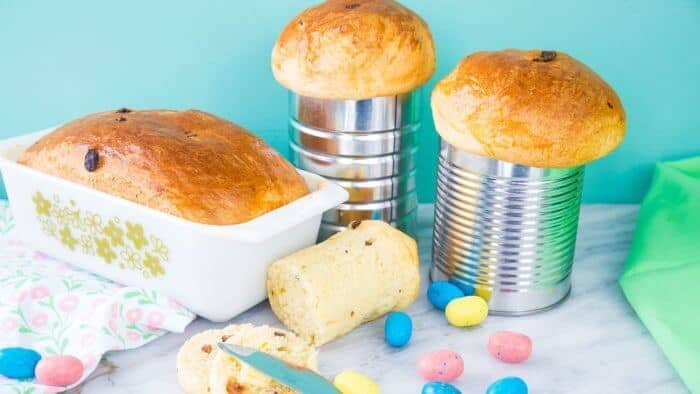
Ukrainian Babka Recipe
It isn’t Easter in my household until we eat this bread for 4-5 days until we have our fill, then are sated for yet another year. This recipe is called Babka by mainly Canadian Prairie Ukrainian settlers, as it has been argued ( as you can read in the comments!) that this is Paska. Now, here on the Prairies my Mom and Baba swore up and down that actual Paska is not a sweet bread, is braided and has no raisins. Here on the Prairies we tend to actually have our own little culture when it comes to being Ukrainians. We pronounce kielbasa as ” koooo-basa” – which is the ONLY place that it’s pronounced like that! Isn’t that strange? It’s a uniquely Canadian prairie version of saying the word, however with our very large population of Ukrainian settlers it’s no less authentic, just as calling this Babka is no less authentic. Ways and words were changed when my ancestors arrived here and adapted to a new life.
Also on another interesting note, it’s unique to the Edmonton area that we spell it “perogy” instead of pierogi. We have a Perogy House here, it’s just how we spell it sometimes!
What is Easter Bread or Ukrainian Babka?
It is a light, buttery yet slightly sweet yeast bread with raisins, baked in coffee tins and is so fantastic toasted with some butter on it. Or plain with margarine. Or toasted with anything on top. It is also a labor of love and takes a few hours.
Ingredients Needed:
- 1 cup of butter
- 2 cups of milk
- 3/4 cup of white sugar
- 1 cup of cold water
- 1/2 cup of warm water
- 1 tsp sugar
- 2 tbsp of traditional yeast
- 6 large egg yolks
- 1/2 tsp turmeric
- 2 tsp of salt
- 8-9 cups of flour
- 2 cups of raisins
- 7 small coffee tins
- One beaten egg to brush the tops with
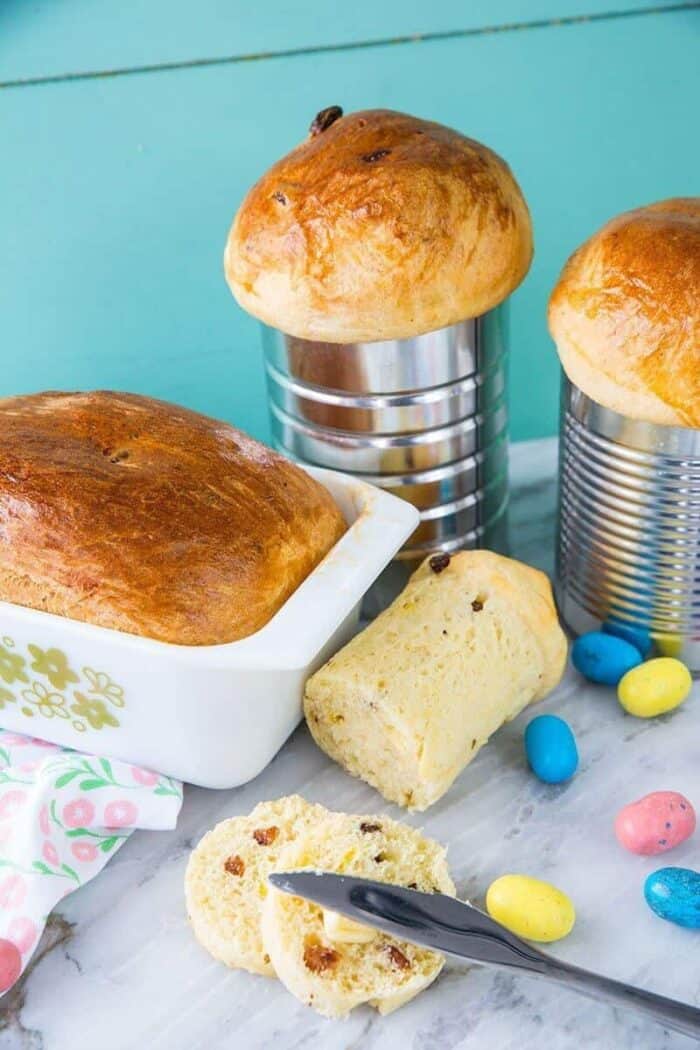
Now, I put the butter, milk and 3/4 cup of white sugar in a pot and brought it to a near boil, you want to slightly scald the milk.
Then I called my mother, and during that conversation, she mentioned that she throws it all into the microwave and nukes it until it’s incredibly hot.
Now, that is certainly not how my predecessors did it. However, this modern woman on her second batch used the microwave.
And it works like a charm!
Now, you have to let the mixture cool, and adding that cup of water certainly helps; thus, we leave it until the end here.
Mix the warm water and 1 tsp of sugar in your yeast thoroughly and let it start bubbling away.
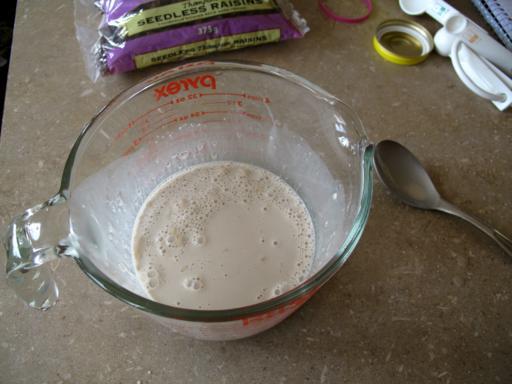
Beat your egg yolks and turmeric. The turmeric gives the bread its lovely color. You can also use three whole eggs instead of the six egg yolks but the yolks make a richer bread. So three eggs OR 6 yolks, folks.
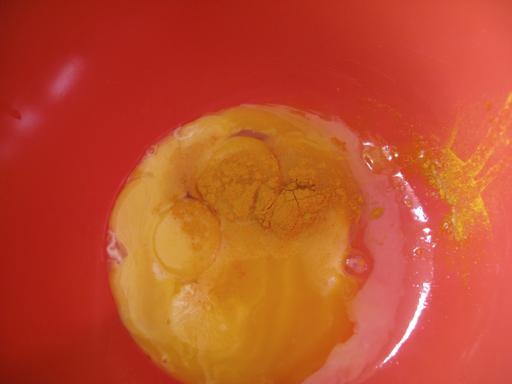
Add it to the cooled milk mixture.
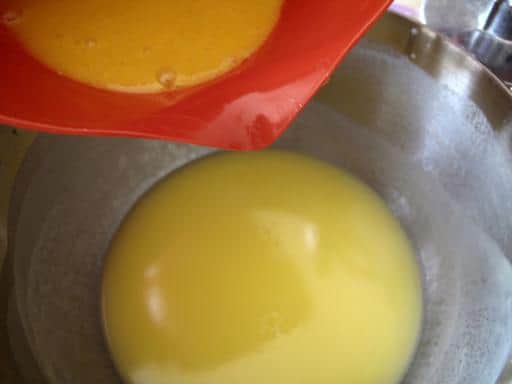
Then add the yeast.
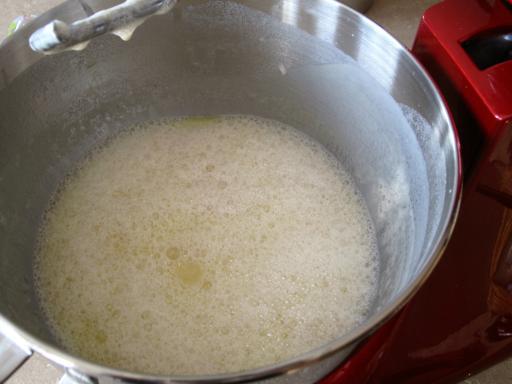
I use the mixer for this now because it is one heck of a job. Mix the salt into the flour, add the first four cups of flour, then your raisins. Then, slowly add another 4-5 cups until the dough is slightly sticky.
My dough always climbs the hook eventually, so I used the mixer to combine it and kneaded as much as possible, then removed it and kneaded it on the counter for a while.
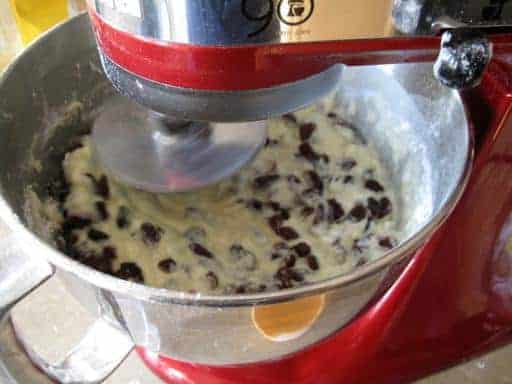
Once that’s done, it needs to rise. Put it into a bowl(s) in a nice warm place.

Cover it of course.

Once it’s doubled in size, it’s time to punch it down and put it in the tins to rise again. You want to fill the tins only halfway with punched-down dough; this dough rises like you wouldn’t believe!
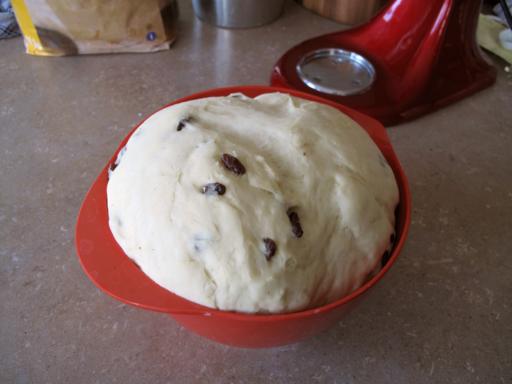
Grease the heck out of those coffee tins. I only had six this year, so you can also use a loaf pan. This would make a perfect seven tins.
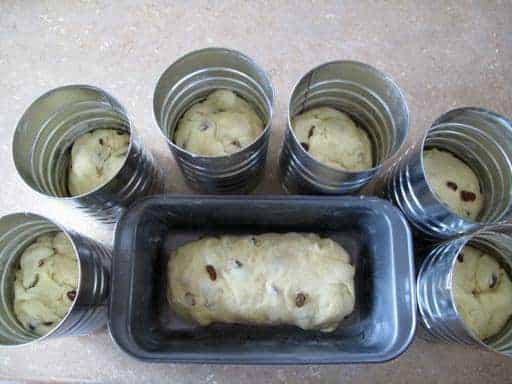
It’s time to let it rise again. I had a nice warm stove from banana bread, so they sat on there. Let them rise until they are almost at the top. They will rise in the oven as well when they start baking, which is why you want them only to rise barely to the top of the tin.
Remove all the oven racks except the bottom one. Kick the tires and light the fires to 325 degrees.
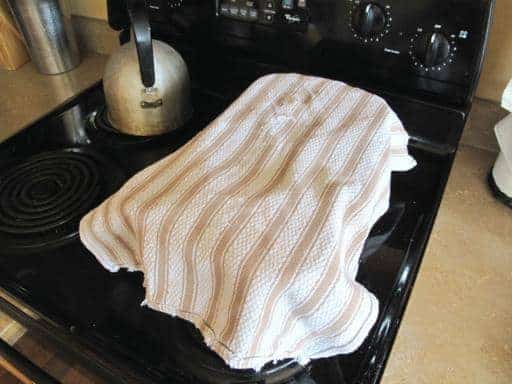
Bake for 30-40 minutes on the very bottom rack. The tops will get very golden brown but don’t fear. The inner part has to cook, and the tops will get and stay brown.
Cool very slightly in the tins, then remove to ensure the bread doesn’t sweat, and the bottoms don’t get soggy!
Happy Baking,, you guys! I am so happy to share this recipe with you. It’s our family tradition, and I’m thrilled that you can bake it as well!
Love,
Karlynn
Easter Bread, or Ukrainian Babka
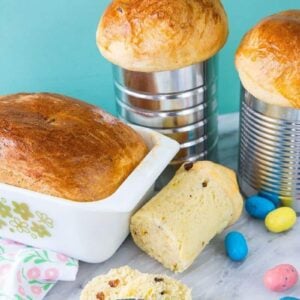
- Prep Time
- 2 hours
- Cook Time
- 20 minutes
- Total Time
- 2 hours 20 minutes
- Course
- Breakfast
- Cuisine
- bread
- Servings
- 10
- Calories
- 741
- Author
- Karlynn Johnston
Ingredients
- 1 cup of butter
- 2 cups of milk
- 3/4 cup of white sugar
- 1 cup of cold water ( I add ice)
- 1/2 cup of warm water
- 1 teaspoon sugar
- 2 tablespoons of traditional yeast
- 6 large egg yolks
- 1/2 teaspoon turmeric (or saffron)
- 2 teaspoons of salt
- 8-9 cups of flour
- 2 cups of raisins
- 7 small coffee tins
- One beaten egg to brush the tops with
Instructions
- Place the butter, milk and 3/4 cup of white sugar in a pot and bring it to a near boil, you want to slightly scald the milk. You can also heat it in the microwave as well to the point of scalded (near boil).
- Add in the cup of cold water and let the mixture cool.
- Take the 1/2 cup of warm water and 1 tsp of white sugar, mix in your yeast thoroughly and let it start bubbling away.
- Beat your egg yolks and turmeric (or saffron if you want traditional). The turmeric gives the bread it’s lovely color. (You can also use 3 whole eggs instead of the 6 egg yolks but the yolks make a richer bread. So 3 eggs OR 6 yolks)
- Add the egg mixture to the warm milk mixture. You need to let the saffon dissolve in the warm mixture before you move on, if you use saffron!
- Then add the yeast mixture to the bowl.
- I used the mixer for this now because it is one heck of a job. Mix the salt into your flour then add in the first four cups of flour, then your raisins. Then slowly add another 4-5 cups until the dough is slightly sticky. The dough should stick to your hand very slightly, but be a nice elastic dough.
- My dough always climbs the hook eventually so I used the mixer to get it combined and kneaded as much as possible then removed it and kneaded it on the counter for a while.
- Once that’s done it needs to rise. Put it into a bowl(s) in a nice warm place and cover it with a damp tea towel.
- Once it’s doubled in size, it’s time to punch it down and put it in the tins to rise again. You want to fill the tins only half way with punched down dough, this dough rises like you wouldn’t believe!
- Grease the ever lovin’ heck out of those coffee tins. (I use the medium size, the 13-16 oz coffee tins, NOT the large ones!) This would make a perfect 7 tins. You can also make it in a loaf pan.
- Time to let it rise again, Let the dough rise until it is almost at the top of the can. They will rise in the oven as well when they start baking, which is why you want them only to rise barely to the top of the tin.
- Remove all the oven racks except the bottom one. Kick the tires and light the fires to 325 degrees.
- Bake for 30-40 minutes on the very bottom rack, the tops get very golden brown but don’t fear, the inner part has to cook and the tops get brown and stay brown.
- Once they are nearly done, brush with the beaten egg and cook until the bread is finished.
- The bread will sound hollow on top when tapped & be a lovely brown.
- Cool very slightly in the tins then remove to make sure the bread doesn’t sweat and the bottoms don’t get soggy.
- If they stick slightly in the tins, twist and shake gently at the same time, they will pop right out.
- If they stick in the loaf pans, run a knife along the edge to free the bread then remove safely.
- Cool on racks for a couple of hours … if you can wait!
Recipe Video
Recipe Notes
Nutrition Information
All calories and info are based on a third party calculator and are only an estimate. Actual nutritional info will vary with brands used, your measuring methods, portion sizes and more.
Made this recipe?
Share a photo of what you made on Instagram or Facebook and tag me @thekitchenmagpie or hashtag it #thekitchenmagpie.
Please rate this recipe in the comments below to help out your fellow cooks!
Learn to cook like the Kitchen Magpie

A Very Prairie Christmas Bakebook
Cookies, Candies, Cakes & More: Vintage Baking to Celebrate the Festive Season!
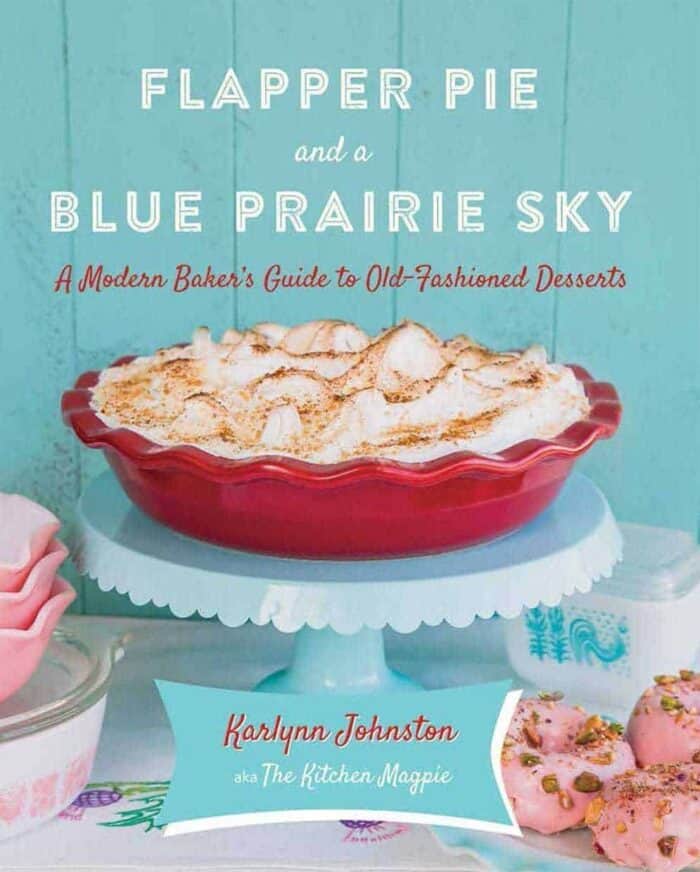
Flapper Pie and a Blue Prairie Sky
A Modern Baker’s Guide to Old-Fashioned Desserts
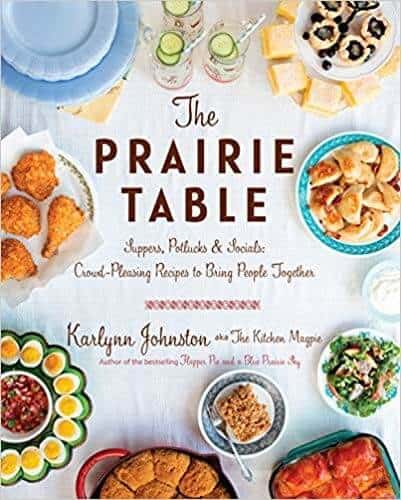
The Prairie Table
Suppers, Potlucks & Socials: Crowd-Pleasing Recipes to Bring People Together

Pin This To Your EASTER BAKING Board and Remember to FOLLOW ME ON PINTEREST!
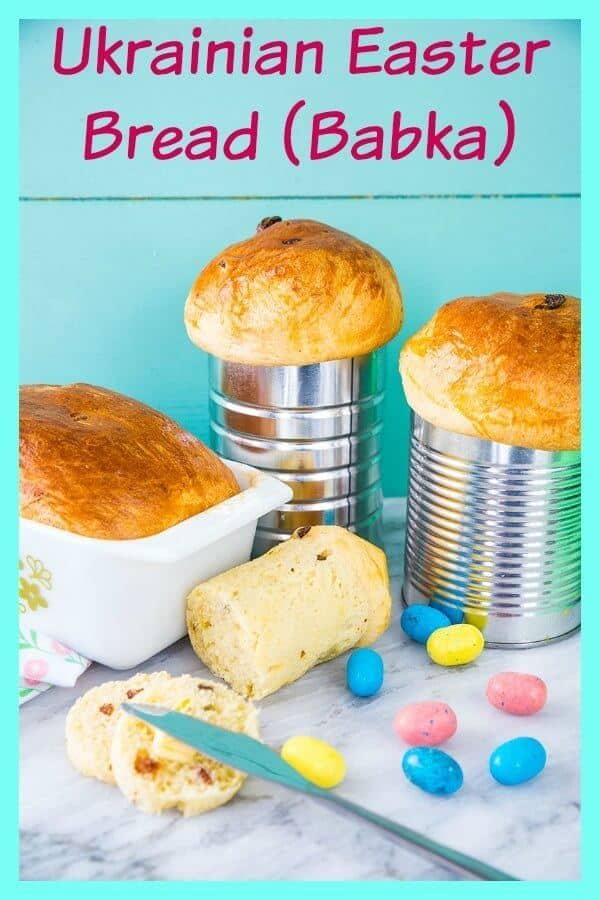
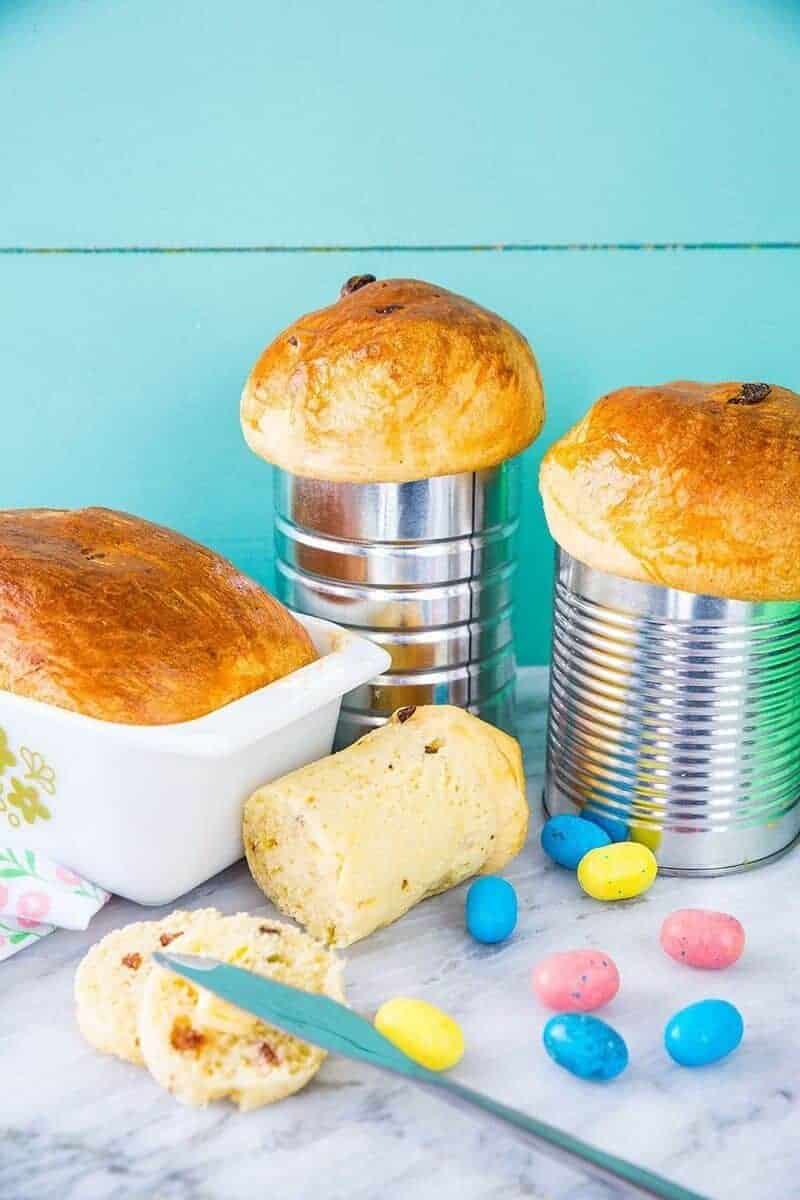
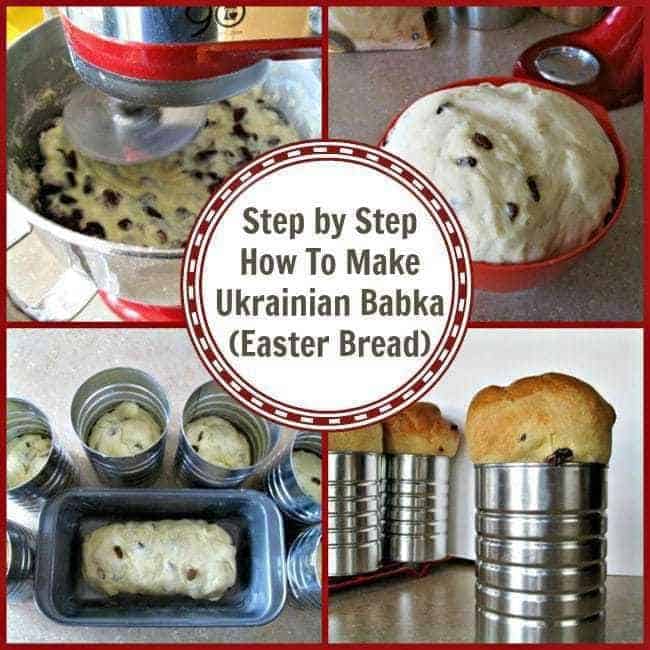


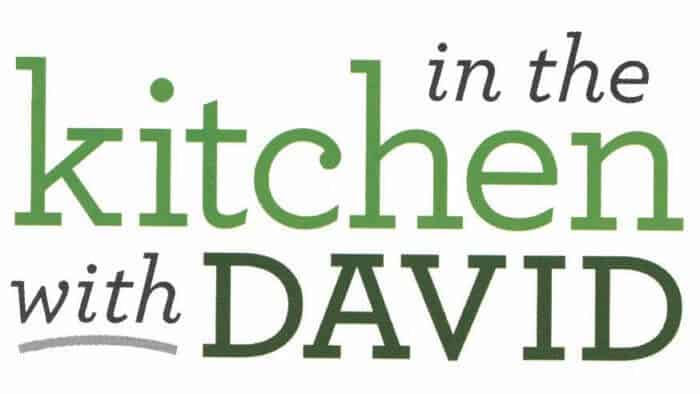





Marlene says
I love this recipe! The bread came out so moist my husband even enjoyed it, and he was indifferent to Easter baba. Probably because my mother’s, as she aged, was very dry. From this one recipe I made a large loaf in an angel food cake pan and two regular bread loaf pans. This is definitely a keeper.
Angie says
I have the same recipe & have used it for about 30years. I have , in that time made a few changes, I use parchment paper in the cans, & cut them about an inch taller than the cans. I am much easier when baking, cuz I know the bread will come out without sticking. I also use instant yeast. But the recipe remains the same. It makes the most delicious bread.
Dave says
For years I have been making this with an old recipe, that called for cents worth of saffron.
My grandmother and mother always used tomatoe juice cans to bake it in .
Her recipe also made enough for 30 loaves as it would be shared.
It was an all day process to bake that much bread
Shawn says
Hi Karlynn, my mom’s mom came from Ukraine early, landed in the Lakehead/ Fort William / Thunder Bay. Grandma’s brother-in-law was a baker. our family has always called the Easter bread Babka, perogies are Pet-a-ha. They always used saffron if they could. Thank you for this authentic recipe.
Cathy says
Shawn,
My Baba came from the Ukraine and settled in Fort William as well.
I have been looking for instructions as Baba is long gone and nobody knows how to make this . Put a hair and Saffron Baba Bread..
Small world
Kerilee Snatenchuk says
Thanks for this recipe. I have made it twice and both times used my wild sourdough yeast and it turns out great every time. My mother recently passed and I was looking to keep our Ukrainian Easter traditions going. I found your recipe – she would be proud to see the babka tradition keep going.
Melissa Dutka says
I am from NY, my grandparents came here via Germany post war… being from Ukraine my grandparents never lived in Canada but we called babka babka and also perogi we’re called ( pid-o-hay-a ) I can only spell it how it sounds but most people do not call it that … and Kabashi is kebasa… bothe grandparents were from northern Ukraine
Jacqueline Kennedy-Green says
Can you tell me the actual size of these coffee runs when they’re filled with coffee? Lol I don’t drink coffee so I’m not familiar. Thank you!
Stephana BobeyPoulsen says
Haha! Love your intro…those are exactly all the words I was using to describe other websites as I searched for a recipe closest to what I remember making with my grandma in Edmonton.
Linda says
Sheepishly but very respectfully I’d like to ask can I make babka dough using the dough cycle in my bread machine and then transfer it to a loaf pan to bake it in my oven?
Erica says
The recipie was very easy to follow and tasty. We found the next day it was dry and not moist. Any suggestions why that could be? Thanks
Stacey says
Thanks for the recipe! I have been searching for this specific bread as I grew up with it but as Baba’s passed, the recipes faded away. We must be pretty close to same Ukrainian communities, this is Easter bread and it’s koobasa 🙂
PAULETTE SCHENK says
What I do is make One batch with tumeric and one without, I divide all into a marble yellow and white color bread. this is what my Baba (Grandmother) would do, the closest recipe I could find. I’ve been using this for a few years now. Love it!
she never had a recipe so this was gold to me .
Thank You
Betsy says
Far too many ads on your site. Hard to read the recipe
Ali says
My babusia who settled in Wisconsin also called this bread Babka, never Paska. And she and my mom also always said “koo-basa” for sausage. And dumplings were always perohy (pronounced “peh-roh-hih”… i have never heard anyone pronounce or read that as ‘parahah’). She was from the part of Ukraine that was part of Galicia
Andrea Knox (Bodniowycz) says
Same with us! Babka and “ koobasa”
Angela from Calgary says
I love this recipe. I made it for the first time two days ago. I used saffron, since that’s what I grew up with. It’s easy to follow, and the bread turned out absolutely delicious. I halved the recipe so I was able to do all the kneading with a Kitchen Aid mixer.
You are right, it rises like crazy !!
Thank you for sharing your family recipe !!
Iris says
Hi Angela
Help!!!Never used saffron before, do u soak it in water and use the liquid or do u actually put the saffron herb in?
Larry Komoski says
We make a “saffron tea” in a shotglass. A pinch of Saffron with hot water. let it seep for 10 minutes. Strain the Saffron out and add the cooled liquid to your wet ingredients.
Val Tworek says
A bit to much turmeric, too yellow for me, maybe just a 1/4 tsp next time .But otherwise great and easy ! 😊
Christine says
Delicious! I made one into a chocolate babka too and dang it’s good!
Kathie Yates says
How long do you bake the loaf pans for? Is it the same as the cans?
Debbie says
Karlynn, do your coffee tins have a rim ?
Did you inherit coffee tins without a rim ?
Or, if you grease your tins enough, even with a rim, the Paska will rise ?
Susan says
Sooooo disappointed in this recipe. I tried it 2x…never came close to rising as it should not during 1st rising nor second, and not when I tried it the next day. Yeast wss brand new…all ingredients fresh. Rising environment perfect temp. This recipe flopped for my friend, too.
Veronica says
Yes, it should be made with saffron instead of turmeric! I suppose if you can’t find saffron, turmeric will do.
Bianca says
You can use a can opener to easily remove the rims on coffee cans. I wouldn’t try it with a rim!
Kate Pigula says
Karlynn.I’m not sure about the spelling but being full blood Ukrainian ,I thought the correct way to pronounce for Ukrainian is pirohy (rolling the r). The Polish was is pirogi. Either way they are delishes.
Irene says
Pronunciation in the western provinces has changed over the many years of Ukrainian settlement, but as a Ukrainian Canadian, born in Germany and brought to Ontario in 1948, fluent in the Ukrainian language (also read and write it), I can vouch for the fact that “perohy” is pronounced as “pirohi” and not “paraha”. This name was used for these dumplings in the western Ukraine (which bordered on Poland) and came from the Polish “pierogi” pronounced “Pee-ye-rogi). The rest of Ukraine knew them as “varenyky” (vareniki), while perohy or “perishki” (small perohy) were actually baked buns with savoury fillings (eg. sauerkraut and mushrooms, meat fillings etc.)
Ali says
Thank you for this. I have never in my /life/ heard “paraha”
Sandra Seneshen says
We share your family’s division of Babka, and Paska. Having done a bit of research to supplement the family stories( my grandfather was 5 when they emigrated, and the great grandparents were long gone before I was born), I think the language differences are because the great pre WW1 Ukrainian immigration to the Canadian Prairies was largely from the portion of Western Ukraine held by the Austro-Hungarian empire, and consequently those languages get muddled in. This is why Ukrainians were considered ‘enemy aliens’ during the Great War, and had to have special papers to leave their homes,;or risk internment in camps, despite, in fact, being refugees from the enemy territory.
Cindy says
Thank you for your lovely story and recipe. My mom and her family are from the Canadian prairies. And her parents immigrated at different times between 1900-1920 and from different parts of Europe. Lots of families members got lost travelling out of Europe to find passage to the new country. So new traditions were
Born. This bread with raisins is one of my mom’s fav tradition for Easter. She has told the stories of why they changed the recipes and added different ingredients to like raisins in the Easter bread to make up for the shortages in other foods that were traditional in the old country. Her perogies were just as different too. I miss the big family meals where everyone brought their fav dish. We lost our recipes a few years ago and I will be making your Easter bread this year .
Sandra Moroz says
Hi Lorraine: Perogy is actually Polish. Perohy (paraha) is the correct way to pronounce this in Ukrainian. Varenyky is another word that is also used. There is nothing wrong with your pronounciation. Try saying perohy to a Ukrainian person, you will not be disappointed. Keep up your Ukrainian cooking!! …….Sandra Moroz Moncton, N.B.
Deb says
My grandmother was Ukrainian and we also used Varenyky
Olya says
I can’t find traditional yeast so can I use sourdough starter instead ?
Jackie says
I don’t want to make such a big recipe can I shorten it somehow.
Alexina says
I cut it in half ! Worked great 🙂
Bobbie says
So great! Each step was clear & precise. It made perfect dough that was easy to work with. Thank you!
JOYCE says
How many loaf pans would I need for this recipe? I don’ have coffee tins.
Ruby says
Yippee!! I’m thrilled to see that you put Saffron in your Babka – like my Baba! AND . . . she always made her Babka in Tomato Juice Cans – looked like the coffee tins you have used for some. Well done!!! Now all I have to do is make some!! Fingers crossed that it will live up to the memory I have of how hers tasted.
Lorraine A Murdoch says
I can’t wait to try this. I grew up in Manitoba and we called perogies, paraha. People definitely look at me strange when I say that…lol
Sandra Moroz says
Hi Lorraine: Perogy is actually Polish. Perohy (paraha) is the correct way to pronounce this in Ukrainian. Varenyky is another word that is also used. There is nothing wrong with your pronounciation. Try saying perohy to a Ukrainian person, you will not be disappointed. Keep up your Ukrainian cooking!! …….Sandra Moroz Moncton, N.B.
Kate Pigula says
Sandra I just noticed your comment. I wrote the same thing as you. Pirohy for Ukrainian. You are absolutely right.